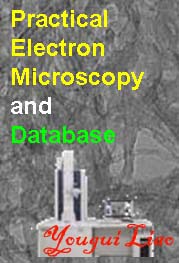
Chapter/Index: Introduction | A | B | C | D | E | F | G | H | I | J | K | L | M | N | O | P | Q | R | S | T | U | V | W | X | Y | Z | Appendix
| The resolution of electron microscopes (EMs) is partially limited by: In STEM measurements, the electronic noise or interference by any stray fields in the environment can superimpose on the ramping current in the scanning coils when STEM images are generated by rastering the electron beam on specimens. The high frequency fluctuation leads ‘tearing’ noise in the images, while the medium- and low-frequency noises induce distortion of the images. All those noise and interference especially affect the precision of spatial coordinates of the recorded atomic features. In order to avoid degrading high voltage stability through stray electromagnetic fields, especially for a TEM system, shock absorbers and a shielding box for the microscope’s high-voltage tank can be installed. The practical (real) energy resolution of EELS in a TEM depends not only on the energy spread of the electron source, but also on instabilities in accelerating voltage of the electron beam, spectrometer energy dispersion and stray electromagnetic field. Furthermore, in electron holography measurements, the high brightness of nanotips allows for short hologram exposure times, therefore, the distortive effects of stray fields on the final image are minimized.
|